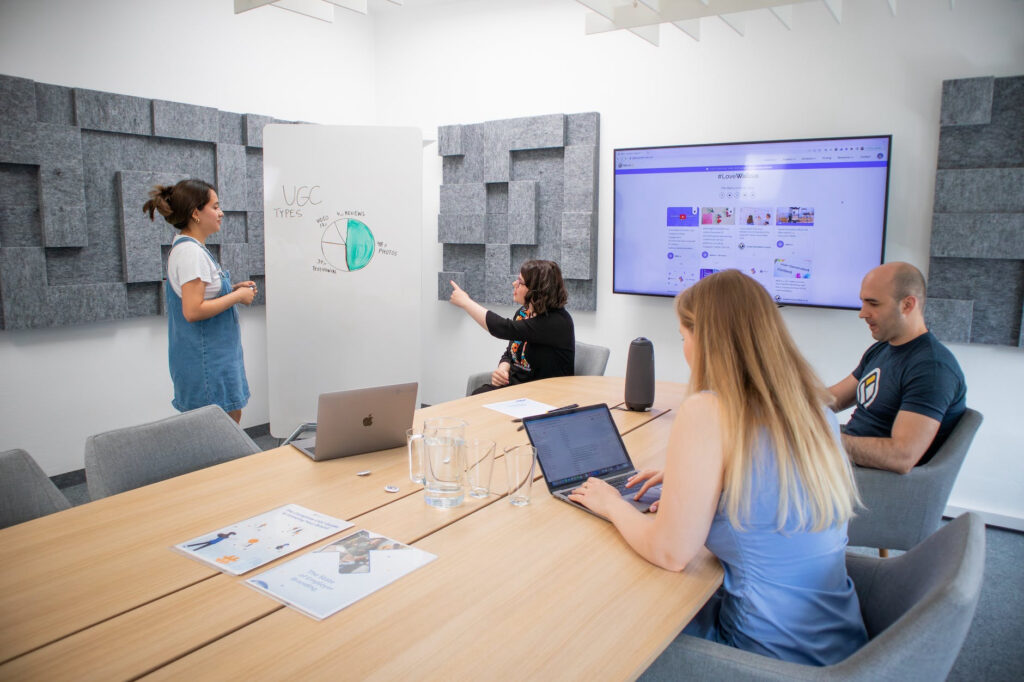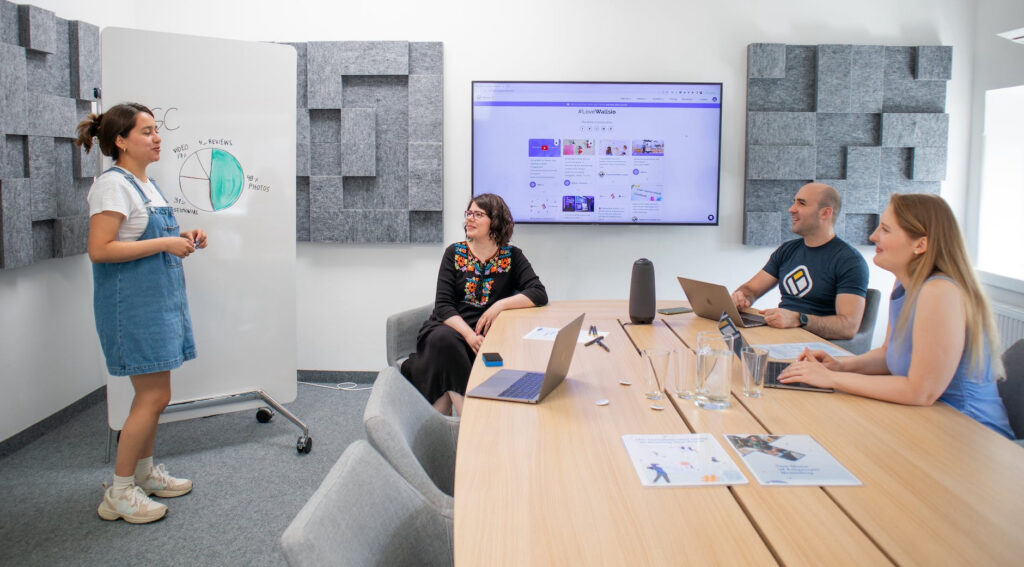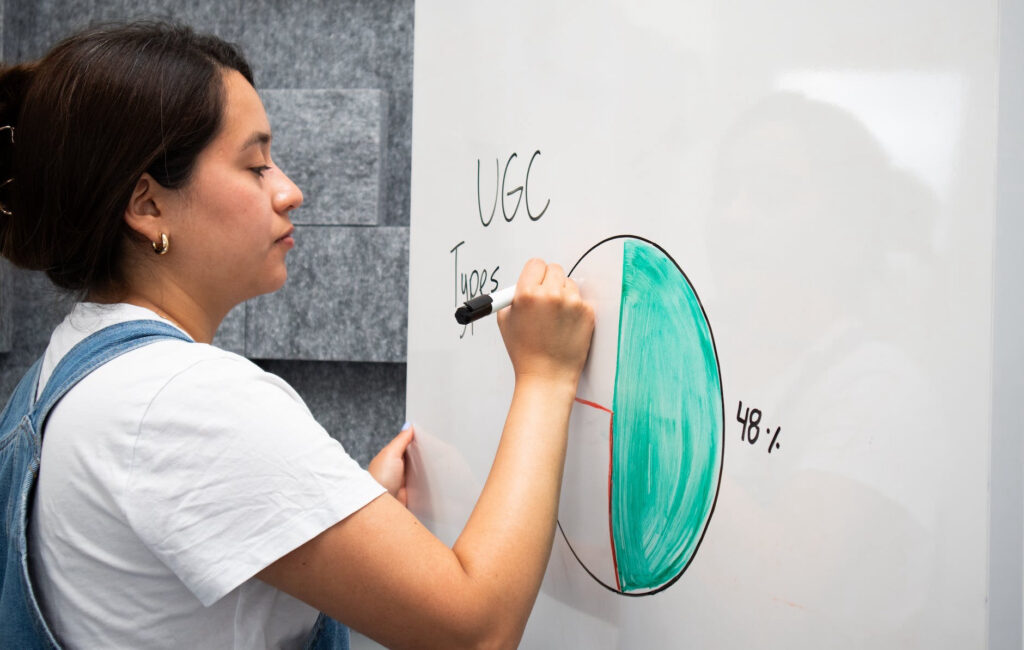Unlocking The Invisible Power of UX-Led Processes
UX-led refers to an approach where user experience is the primary driving force behind the design and development of products and services, ensuring that every aspect is crafted with the end-user’s needs, behaviors, and satisfaction in mind.

UX-Led Development
In the bustling corridors of innovation and the ever-evolving landscape of business, there’s a silent yet powerful force at play within many successful companies, often unbeknownst to them. It’s UX-led development – a methodology that might very well be the cornerstone of the remarkable services one company offers, even if it’s not explicitly acknowledged.
At its heart, UX-led development is about crafting experiences rather than just churning out products or services. It’s a philosophy that places the user at the epicenter of the development process. This approach goes beyond mere aesthetics or functional design; it delves into the deeper waters of user psychology, needs, and behaviors.
Consider, for instance, the ease and intuitiveness with which customers interact with your services. That seamless journey from point A to B, the intuitive layout of your website, the satisfying click of a well-designed feature – these are not just happy accidents. They are the fruits of a UX design, where countless hours of research are poured into understanding and empathizing with the end user.

In this realm, user research is not just a task to be ticked off; it’s an ongoing conversation with the very people for whom the services or products are designed. From detailed interviews to scrutinizing heat maps, every bit of data is a gold mine of insights. This information shapes everything – from the color palette of an interface to the something as simple as the placement of a ‘Help’ button.
The UX-led approach is a highly iterative sprint. It’s never about getting it perfect the first time; it’s about continuous improvement. Each iteration is a learning curve, bringing you closer to what your users genuinely need. This cycle of feedback and refinement is what keeps services relevant and user-friendly.
Collaboration is Important Part of UX-led Development
UX design cannot exist in silos. It’s a field inherently dependent on collaboration and integration across various disciplines. In the modern business environment, UX design intersects with areas like marketing, product development, customer service, and technology.
When UX design is siloed, it loses the context and insights that come from these collaborative interactions. It becomes challenging to create designs that truly resonate with the target audience or meet the comprehensive needs of the business. Successful UX design thrives on diverse perspectives, interdisciplinary knowledge, and a holistic understanding of both user and business goals.
Integrating UX design into all aspects of a product’s lifecycle ensures that the user experience is consistently prioritized and refined. This integration leads to products and services that are not only functionally superior but also deeply connected with the users’ needs and preferences. It’s not just designers or developers at the drawing board; it’s a collaborative of diverse minds – marketers, customer support, engineers, and end users. This collaborative effort ensures that every facet of the user experience is considered and polished.

Better UX Means Better Business
What’s often overlooked is how this approach aligns perfectly with business objectives. A happy user is a loyal customer, and a loyal customer means sustainable business growth. By addressing real user problems, companies inadvertently boost their brand, foster loyalty, and often, open new avenues for innovation.
In essence, UX-led development is not just about making things look good; it’s about creating a resonant user experience. It’s the invisible threads that connect users to services in meaningful ways. Whether recognized or not, it’s a pivotal element in the success of modern businesses, subtly but significantly enhancing the services they offer.
UX-led Impact
As we dive deeper into the impact of UX-led development, it becomes clear that this approach is not just a component of success; it’s a catalyst for innovation and differentiation in a crowded market. Imagine a world where every service is functional, but only a handful are truly delightful to use. That delight, that sense of satisfaction and engagement, is the hallmark of a UX-led strategy.
In the realms of digital services and products, where competition is fierce, and user attention spans are fleeting, UX-led development offers a distinct advantage. It’s not about keeping up with trends or technological advancements; it’s about anticipating and shaping user needs and preferences—long term. By doing so, companies not only retain their relevance but also set new standards in user experience.
Let’s consider the subtle nuances of this approach. It’s not always about grand gestures or overhauling entire systems. Sometimes, it’s the small, thoughtful touches – a faster loading time, an easily navigable menu, a responsive layout – that accumulate to form a powerful user experience. These elements might seem trivial in isolation, but collectively, they create an environment where users feel understood and valued.
UX-led Adaptability
The UX-led process is an ever-evolving function. It adapts, morphs, and grows with the users it serves. As user needs change, so do the solutions. This dynamic nature keeps companies agile and responsive, turning them into entities that don’t just respond to change but drive it.
In this context, it’s crucial to recognize the role of data and feedback. UX is not a guessing game; it’s a science backed by data. Every click, every swipe, every moment spent on a page is a piece of the puzzle. These insights enable companies to make informed decisions, not based on assumptions or fleeting trends, but on concrete user behavior and feedback.

Industry Relevant
UX-led approach transcends the boundaries of industries. Whether it’s healthcare, finance, education, or e-commerce, the principles remain the same – understand your user, solve their problems, and enhance their experience. This universality is what makes UX-led development a powerful tool across various sectors.
As companies increasingly recognize the value of user experience, UX-led development is moving from the sidelines to the spotlight. It’s becoming an integral part of strategic planning, a key driver of customer satisfaction, and a critical factor in achieving long-term success.



